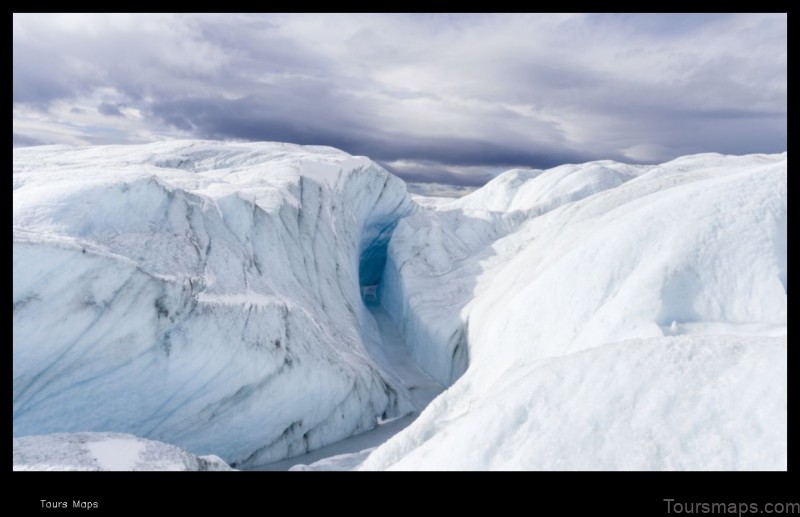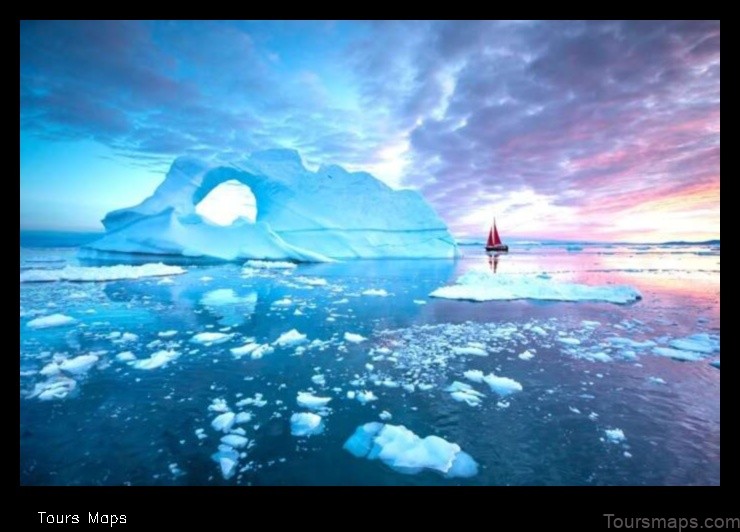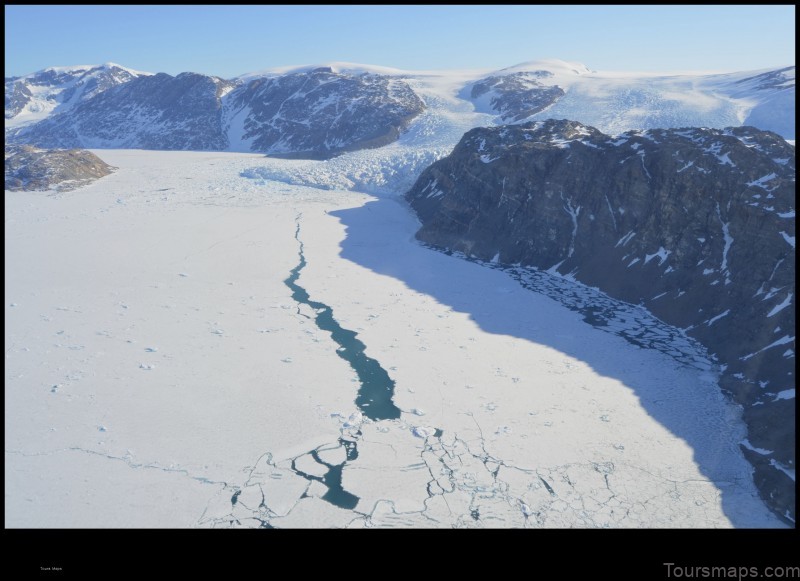
I. Introduction
II. History of Greenland
III. Geography of Greenland
IV. Climate of Greenland
V. Population of Greenland
VI. Economy of Greenland
VII. Culture of Greenland
VIII. Government of Greenland
IX. Natural Resources of Greenland
X. FAQs about Greenland
| Topic | Feature |
|---|---|
| Greenland map | A map of Greenland showing the country’s location in the Arctic Ocean, its major cities and towns, and its physical features. |
| Greenland geography | A description of Greenland’s geography, including its landforms, climate, and vegetation. |
| Greenland travel | Information on how to travel to Greenland, including tips on getting around, where to stay, and what to see and do. |
| Greenland tourism | Information on the tourism industry in Greenland, including popular tourist destinations and activities. |

II. History of Greenland
Greenland has a long and rich history, dating back to the first humans who arrived on the island around 4,500 years ago. The first inhabitants were a nomadic people who hunted and gathered for food. Around 1,000 years ago, the Norse began to settle in Greenland, and they established a number of settlements along the coast. However, the Norse settlements eventually disappeared, and it is not known exactly why. In the 18th century, the Danish began to explore Greenland, and they established a number of trading posts. In the 19th century, the Danish government began to take a more active role in Greenland, and they established a number of schools and hospitals. In 1979, Greenland was granted home rule, and in 2009, it became a self-governing territory within the Kingdom of Denmark.
III. Geography of Greenland
Greenland is the largest island in the world, with a total area of 2,166,086 square kilometers (836,330 sq mi). It is located in the North Atlantic Ocean, east of Canada and north of Iceland. Greenland is a self-governing territory of Denmark.
The geography of Greenland is diverse, with a wide range of landscapes including mountains, glaciers, fjords, and deserts. The climate is cold and harsh, with long, dark winters and short, cool summers.
The population of Greenland is about 56,000 people, most of whom live in the southern part of the island. The majority of Greenlanders are Inuit, and the official languages are Greenlandic and Danish.
Greenland is a popular tourist destination, with visitors drawn to its stunning scenery, unique culture, and opportunities for adventure.

IV. Climate of Greenland
The climate of Greenland is arctic, with long, cold winters and short, cool summers. The average temperature in January is -18°C (-0.4°F), while the average temperature in July is 8°C (46.4°F). The climate varies from region to region, with the northernmost parts of Greenland being the coldest and the southernmost parts being the warmest.
The climate of Greenland is also influenced by the prevailing winds. The prevailing winds in Greenland are from the west, which bring cold air from the Arctic Ocean. This cold air causes the temperatures in Greenland to be much lower than they would be if the prevailing winds were from the south.
The climate of Greenland is also influenced by the sea ice. The sea ice around Greenland acts as a barrier to the cold air from the Arctic Ocean, which helps to keep the temperatures in Greenland from getting too cold.
The climate of Greenland is a major factor in the country’s geography, culture, and economy. The cold climate has made it difficult for people to live in Greenland, and has led to the development of a unique culture. The cold climate has also made it difficult for people to travel to and from Greenland, which has had a negative impact on the country’s economy.
V. Population of Greenland
The population of Greenland is approximately 56,000 people, making it the least populous country in the world. The vast majority of Greenland’s population (88%) is Inuit, with the remaining 12% being made up of Danes and other Europeans. The largest city in Greenland is Nuuk, which has a population of around 17,000 people.
The population of Greenland has been declining in recent years due to a number of factors, including emigration to Denmark and other countries, a low birth rate, and a high death rate. However, the government of Greenland is working to reverse this trend by increasing the birth rate and attracting more immigrants to the country.
The population of Greenland is spread out across the country, but the majority of people live in the southern part of the island. The largest towns and cities in Greenland are Nuuk, Sisimiut, Ilulissat, and Qaqortoq.
The population of Greenland is a diverse group of people with a rich culture and history. The Inuit people have lived in Greenland for thousands of years and have developed a unique culture that is based on their traditional way of life. The Danish people who settled in Greenland in the 18th century have also had a significant impact on the country’s culture.
The population of Greenland is a valuable asset to the country and plays an important role in its economy and society. The government of Greenland is committed to ensuring that the population of the country continues to grow and thrive.
VI. Economy of Greenland
The economy of Greenland is based on fishing, mining, and tourism. The fishing industry is the largest sector of the economy, accounting for about 80% of exports. Greenland has a large number of fish stocks, including cod, halibut, shrimp, and salmon. The mining industry is also important, with Greenland producing zinc, lead, and gold. Tourism is a growing sector of the economy, with increasing numbers of tourists visiting Greenland each year.
The Greenlandic government has been working to diversify the economy and reduce its reliance on fishing. The government has invested in new industries, such as mining and tourism, and has also introduced policies to encourage foreign investment.
The economy of Greenland is still relatively small, but it is growing rapidly. The government is optimistic that the economy will continue to grow in the future, and that Greenland will become a prosperous and self-sufficient country.
VII. Culture of Greenland
Greenland’s culture is a blend of Inuit, Danish, and other influences. The Inuit culture is based on hunting, fishing, and gathering. The Danish culture is based on Christianity and the Danish language. Other influences include the cultures of the other Nordic countries, as well as the cultures of the United States and Canada.
The Inuit are the indigenous people of Greenland. They have a long history in the region, and their culture is closely tied to the land and sea. The Inuit are known for their skills in hunting, fishing, and building shelters. They also have a rich oral tradition, which includes stories, songs, and dances.
The Danish culture is the dominant culture in Greenland. The Danish language is the official language of Greenland, and most Greenlanders are fluent in Danish. The Danish culture is also reflected in the country’s government, education system, and media.
Other influences on Greenland’s culture include the cultures of the other Nordic countries, as well as the cultures of the United States and Canada. These influences can be seen in the country’s architecture, food, and music.
Greenland’s culture is a vibrant and diverse one. It is a mix of traditional Inuit culture, Danish culture, and other influences. This makes Greenland a unique and interesting place to visit.
VIII. Government of Greenland
The government of Greenland is a parliamentary democracy with a unicameral legislature, the Inatsisartut. The prime minister is the head of government and is appointed by the monarch on the recommendation of the legislature. The current prime minister is Kim Kielsen.
The legislature is composed of 31 members who are elected by popular vote for a four-year term. The legislature elects the prime minister and the cabinet.
The judiciary is independent of the executive and legislative branches. The highest court is the Supreme Court of Greenland.
Greenland is a self-governing territory of Denmark. The Danish government is responsible for foreign affairs, defense, and monetary policy. Greenland is represented in the Danish parliament by two members.
Natural Resources of Greenland
Greenland is rich in natural resources, including minerals, oil, and gas. The country’s mineral resources include zinc, lead, copper, gold, silver, uranium, and iron ore. Greenland’s oil and gas reserves are estimated to be significant, but exploration has been limited due to the harsh climate and remote location.
Greenland’s natural resources have the potential to provide a significant boost to the country’s economy, but development will require significant investment and careful planning.
X. FAQs about Greenland
Q1: What is the capital of Greenland?
A1: The capital of Greenland is Nuuk.
Q2: What is the population of Greenland?
A2: The population of Greenland is approximately 56,000 people.
Q3: What is the official language of Greenland?
A3: The official language of Greenland is Greenlandic, which is a dialect of Inuktitut.
Table of Contents
Maybe You Like Them Too
- Explore Doncaster, United Kingdom with this detailed map
- Explore Arroyito, Argentina with this Detailed Map
- Explore Belin, Romania with this detailed map
- Explore Almudévar, Spain with this detailed map
- Explore Aguarón, Spain with this detailed map
